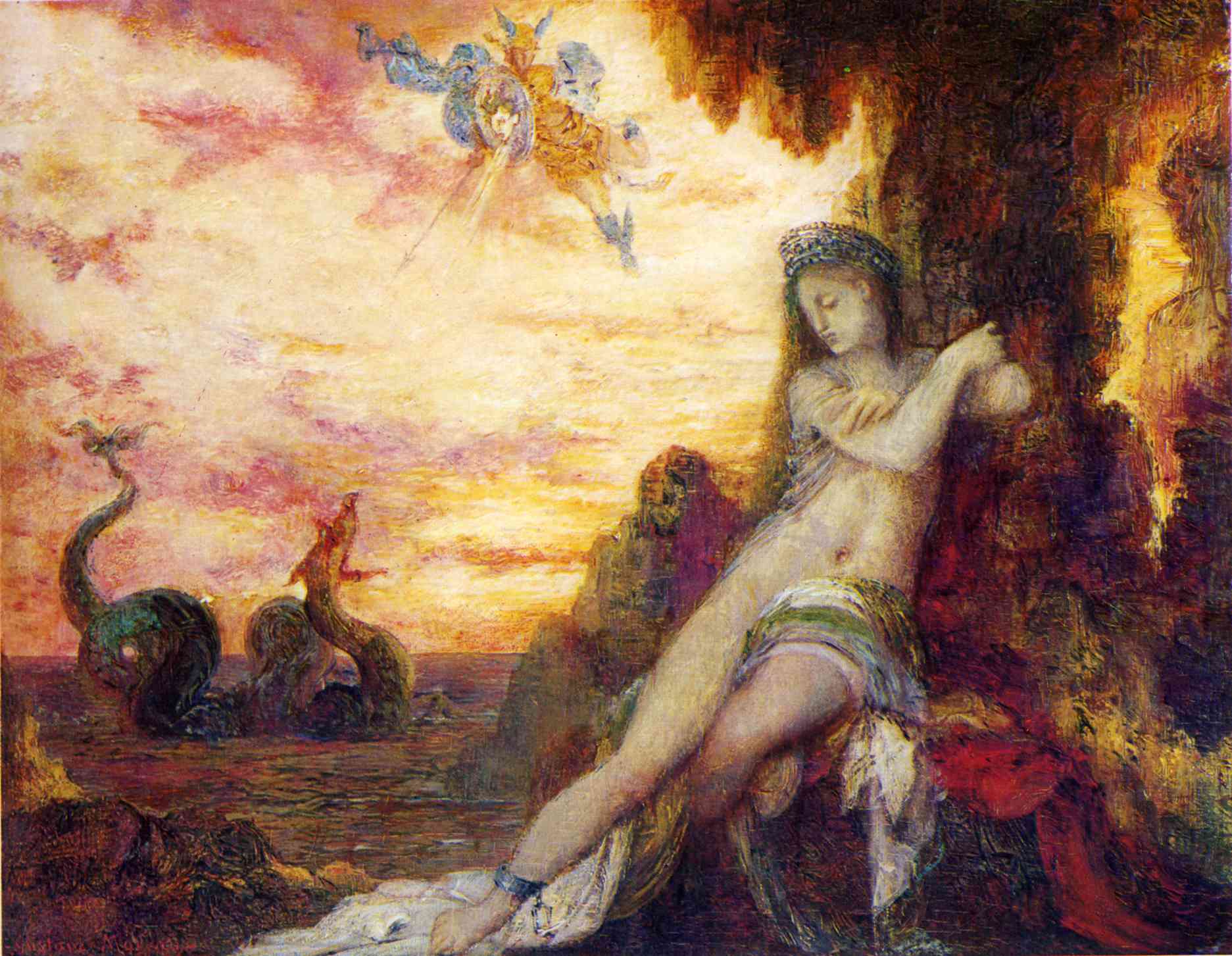In Greek mythology, Andromeda was the daughter of Cepheus and Cassiopeia, king and queen of the kingdom of Aethiopia. Her mother Cassiopeia boasted that her daughter was more beautiful than the Nereids, the nymph-daughters of the sea god Nereus who were often seen accompanying Poseidon. To punish the queen for her arrogance, Poseidon, brother to Zeus and god of the sea, sent a sea monster named Cetus to ravage the coast of Aethiopia, including the kingdom of the vain queen. The desperate king consulted the Oracle of Apollo, who announced that no respite would be found until the king sacrificed his daughter, Andromeda, to the monster. Stripped naked, she was chained to a rock on the coast. Perseus was returning from having slain the Gorgon Medusa. After he happened upon the chained Andromeda, he approached Cetus while invisible (for he was wearing Hades's helm), and killed the sea monster. He set Andromeda free, and married her in spite of her having been previously promised to her uncle Phineus. At the wedding a quarrel took place between the rivals, and Phineus was turned to stone by the sight of the Gorgon's head. Andromeda followed her husband, first to his native island of Serifos, where he rescued his mother Danaë, and then to Tiryns in Argos. Together, they became the ancestors of the family of the Perseidae through the line of their son Perses. Perseus and Andromeda had seven sons: Perses, Alcaeus, Heleus, Mestor, Sthenelus, Electryon, and Cynurus as well as two daughters, Autochthe and Gorgophone.




Perseus and Andromeda
oil on canvas • 122 x 94 cm
 Gustave Moreau
Gustave Moreau